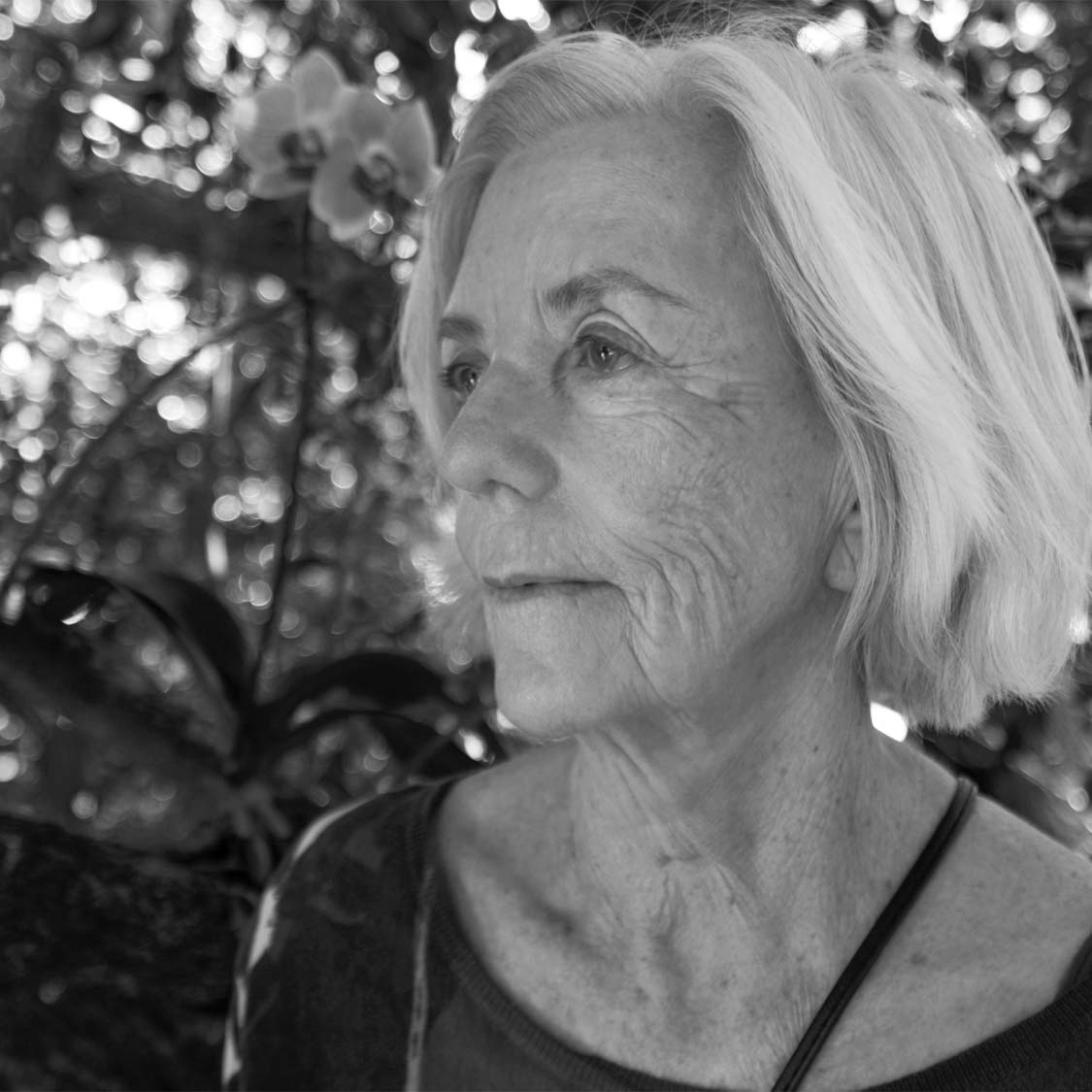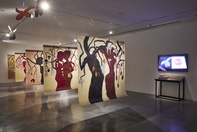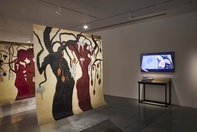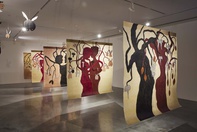Judith Wright
Jagera/Turrbal Country, Meanjin (Brisbane)
2021
Displayed 2021 at Museum of Contemporary Art Australia

Judith Wright
Born 1945, Jagera/Turrbal Country, Meanjin (Brisbane). Lives and works on Jagera/Turrbal Country, Meanjin (Brisbane)
Judith Wright works across a range of media including painting, drawing, video, sculpture and installation, exploring the physical and emotive qualities of the human form. The strong gestural and bodily motifs in her work, whether literal or abstracted, are informed by Wright’s background as a professional dancer with the Australian Ballet. Her focus on the conditions of the body is linked to her exploration of mortality and the transience of life. Wright has exhibited extensively in Australia and internationally and her work is represented in several major university and public collections.
Photograph: Peter Wright
Image courtesy and © the artist
Artist text
by Stephanie Berlangieri
Judith Wright’s practice is deeply grounded in the corporeal. As a former professional ballet dancer, the artist works from the perspective of embodied knowledge – a means of understanding the world through the physical reality of the body. Her large-scale painted books, for instance, demand the viewer’s physical effort. To experience these works one must turn their oversized pages with exaggerated, sweeping motions. Similarly, her works on Japanese paper are directly scaled in relation to the proportions of the body: their abstracted forms hint at the curves and undulations of the human form, while their waxed surfaces mimic the uneven texture of skin and emit a faint, sweet aroma. Wright’s video works, too, revel in the movement of living, breathing bodies against the inert stiffness of mannequins, which feature heavily in her practice.
This focus on the dimensions and conditions of the body is linked to her exploration of mortality and the transience of life. The sudden loss of an infant daughter almost five decades ago resulted in the early work God’s bones: for Nicole (1988–91). Comprising seven paper panels saturated with pigment, beeswax and bitumen, the work’s emotional depth and intensity is felt in its rough surfaces and void-like blackness. Wright speaks of the work as a direct attempt to memorialise a life denied. This impulse to examine the universal experience of grief and mourning continues in her practice and is most visible in her progressive series of video works and theatrical mise-en-scène (Seven stages of desire (2003–10), A journey (2011–12) and Destination (2013)), which attempt to reconstruct the life – and imagine the afterlife – of this lost child.
Wright’s installation for The National 2021 encompasses a suite of five suspended paintings, an illuminated book (accompanied by a video in which two pairs of hands – one young, one old – leaf through its translucent pages) and a flock of winged breasts that hover above the scene. Together, these elements form Nature/Nurture (2021), a title invoking an age-old debate.
The two concepts are reflected in the paintings, which feature imagery that has been doubled or mirrored. Each painting includes a tree of life, a recurrent motif in the artist’s practice, made up of anthropomorphic forms – twisted tree trunks resembling two lovers intertwined, and knobbly branches transforming into silhouetted profiles facing one another. The trees droop under the weight of their ‘fruit’, dozens of phalli symbolising fecundity or, perhaps its inverse, impotence as well as winged breasts, which disrupt this masculine iconography.
A prevalent image in the Middle Ages and early Renaissance, the phallus tree has been associated with witchcraft and sorcery. The winged breasts are an equally compelling symbol within Wright’s visual language. They share the same allegorical sensibility, recalling the harpy (albeit simplified) of Greco–Roman mythology in their human/bird characteristics. In the painted book, this motif is layered over multiple pages and rendered in fleshy reds and funereal blacks. The work assumes the status of an illuminated manuscript in its display, lovingly handled in the video alongside it. In Nature/Nurture, Wright accesses the often-concealed earthliness and mythic qualities of life.
Artist’s acknowledgements
Judith Wright is represented by Sophie Gannon Gallery, Melbourne, Fox Jensen Gallery ,Sydney, and Jan Manton Gallery, Brisbane.
NATURE/NURTURE 2020
Camera: Peter Wright
Editor: Peter Wright
Actors: Judith Wright and Hannah Wright
Studio assistant: Michael Riddle


